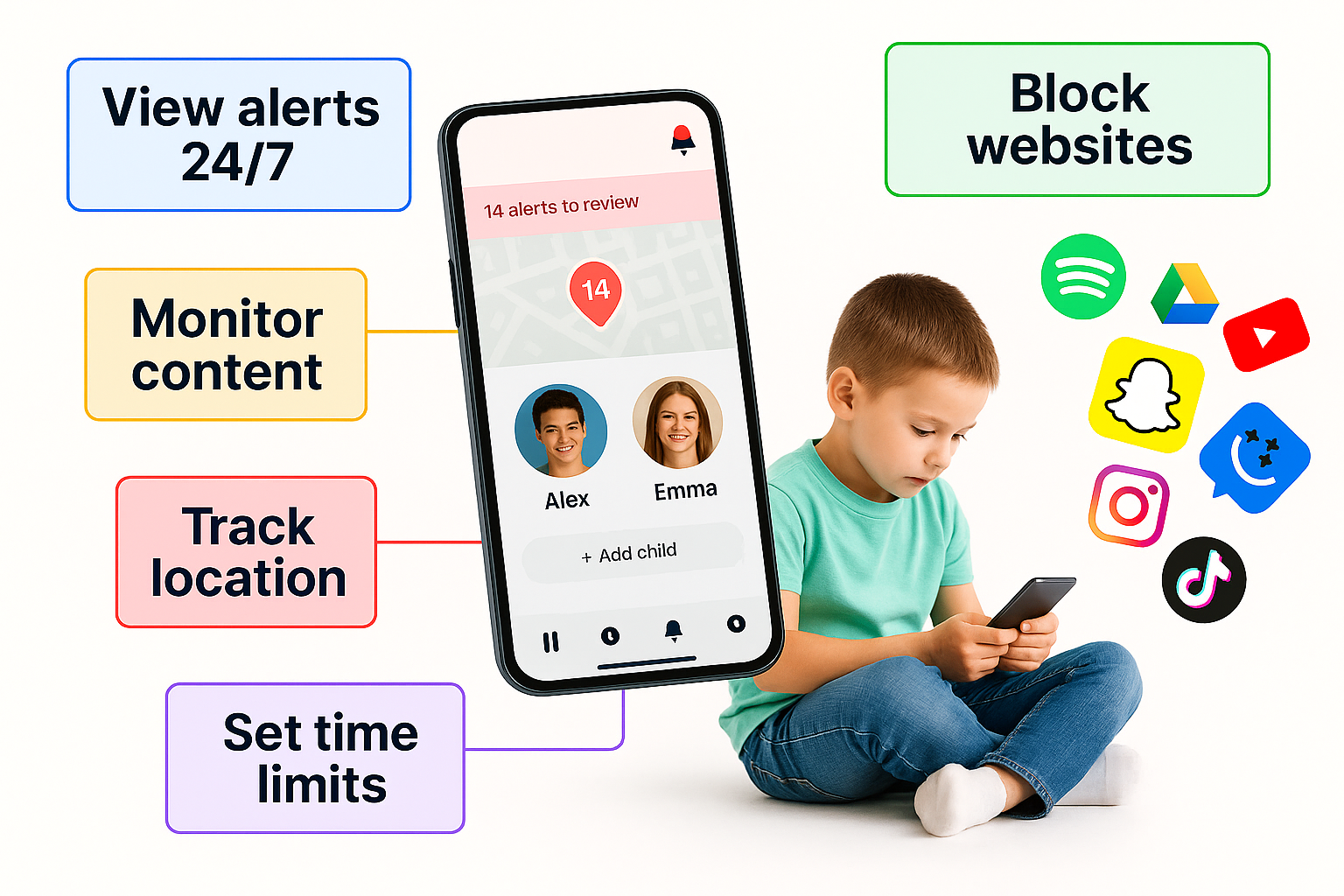Navigating Childhood in the Digital Era: How Phones, Watches & Parenting Fit Together
We’re living through a unique moment in parenting: children are growing up in a world where a single device can serve as a communicator, entertainment hub, learning platform and link to social life. For parents of elementary and pre-teen children, this raises big questions: When is the right age for a phone? Should we start with a smartwatch? What role do these devices play in healthy development, and how do we avoid handing them over without a plan?
This article steps back and looks at the landscape of childhood in the digital era. It examines the opportunities and risks, highlights how devices designed for kids (phones and smartwatches) can help or hinder, and offers a framework for integrating them into daily life in a balanced, intentional way.
The Big Picture: What We Know
Digital devices matter deeply for children’s wellbeing — they are part of how kids learn, socialize and explore, but they also carry potential for harm if left unmanaged.
Children today are growing up in a world where smartphones and wearable tech are becoming normal at younger ages. Devices shape how children spend time, how they connect with others, and how they begin to understand boundaries, habits, and responsibility. That means when you choose to give your child their first phone or smartwatch, you’re not just giving them a screen — you’re giving them a tool that introduces a new stage of independence.
Devices for Kids: Phones vs. Smartwatches
When it’s time to give a device, understanding the difference between a kid-safe smartphone and a children’s smartwatch helps.
Smartwatches for kids
- Simpler, with fewer distractions: voice calls, messaging to approved contacts, GPS tracking
- No access to open web or social media
- Great as a “first device” for safety and independence
- Often includes step counters or movement goals
Kid-friendly smartphones
- More flexible: can include safe learning apps, parent-approved games, calling, texting
- Must be managed with strong parental controls: app whitelists, usage schedules, location tracking
- Better for older kids (9–13+) who are ready for responsibility
The right choice depends on your child’s age, maturity, and the purpose behind giving them a device. It’s less about the technology and more about your family’s values and structure.
A Framework for Healthy Tech Integration
Here’s how to thoughtfully integrate a phone or smartwatch into your child’s daily life:
- Define your goals
Ask yourself: What do we want this device to do for our child?
Common answers include safety, communication, learning, fun, or beginning digital responsibility. - Choose the right device and configure it
A smartwatch may work well for kids under 10. Older kids might need a smartphone with more features — but only if parental controls are in place. Start with basic functions, and scale up over time. - Set family-wide digital rules
Create consistency around:- Charging zones (outside bedrooms)
- Tech-free dinners
- Downtime during school or homework
- Shared review times to talk about how the device is used
- Teach digital awareness
Talk about how technology affects attention, emotions and sleep. Ask your child how they feel after using certain apps. Teach them to spot red flags like feeling anxious after scrolling or losing track of time online. - Gradually increase independence
Introduce privileges step by step. For example:- Week 1: messaging and basic calling
- Week 2: one approved game or educational app
- Month 2: increased time or new feature unlocked after positive use
This makes tech use feel earned, not assumed.
- Model balance as a parent
Kids copy what they see. If you take your phone to bed or scroll through every meal, they’ll likely do the same. Show that tech has a time and place — and that breaks are healthy.
Risks to Avoid — and How Devices Can Help
These are some of the most common issues families face with unsupervised tech:
- Late-night usage: Use scheduled downtime to ensure the device shuts off during bedtime hours
- Exposure to inappropriate content: App approval systems and filtered browsing reduce this risk
- Unhealthy comparison on social media: Many kids’ devices don’t support social media, and delaying access helps mental health
- Excessive screen time: Time limit settings and movement-based features (like fitness goals) on smartwatches help encourage active breaks
- Lack of communication: Parent dashboards make it easy to stay informed about how the device is used and encourage open discussion
Smart devices aren’t perfect. But when used intentionally, they can be powerful tools to help build independence — without removing oversight.
Giving your child a phone or smartwatch is about more than keeping up with their friends or school requests. It’s a decision that connects to how you want them to grow, what values you want to reinforce, and how you’ll guide them toward becoming safe, balanced, and mindful tech users.
Don’t hand over a device and hope for the best. Be proactive. Choose one made for kids. Set clear expectations. Talk regularly. And most of all — keep the relationship at the center of it all.
A child’s first phone or smartwatch isn’t the end of parenting—it’s the beginning of a new phase where your guidance matters more than ever.

